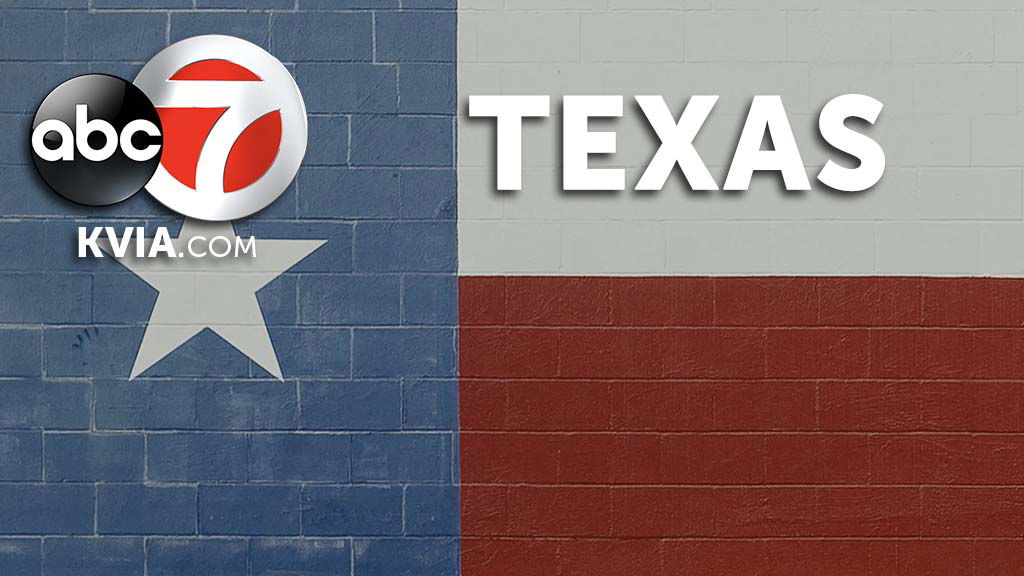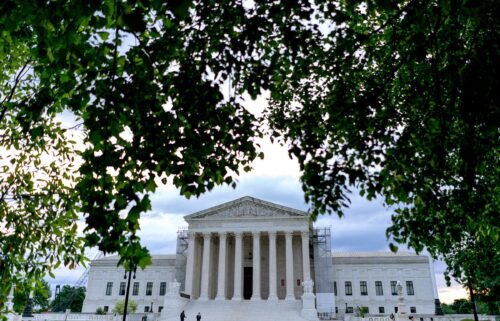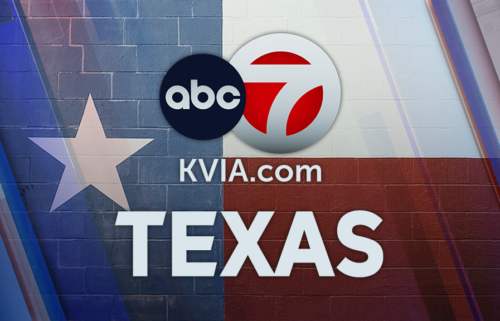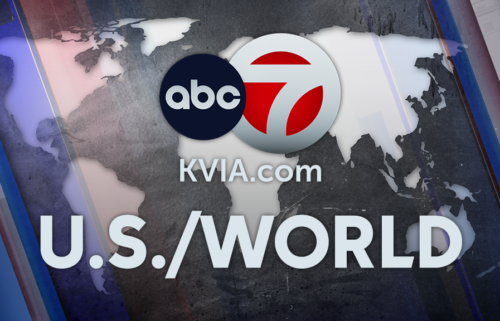The CFP semifinalists and the NIL collectives that back them

By RALPH D. RUSSO
AP College Football Writer
Two days before Christmas, University of Michigan President Santa Ono tweeted out a statement from athletic director Warde Manuel, informing Wolverines fans how they can help athletes they cheer for cash in on their fame while playing college sports.
Eighteen months after the NCAA lifted a ban on name, image and likeness compensation for athletes, the simple acknowledgment of the growing number of organizations eager to provide those opportunities was a significant step for Michigan.
When it comes to NIL, donor-funded, third-party collectives — groups that operate outside an athletic department — have become all the rage.
At this point, it would be hard to find a Power Five school that doesn’t have at least one. But h ow they are run, who runs them and how closely aligned they are with the schools they support is all over the place.
A look at the four teams competing in the College Football Playoff on Saturday and the collectives that support them tell a tale of uncertainty, entrepreneurialism and an emerging market without uniform regulation that defines that current state of NIL.
“There’s a wide spectrum when it comes to collectives,” said Blake Lawrence, the founder and CEO of Opendorse, a company that works with both schools and collectives on NIL activities. “A perfect story would be if the four College Football Playoff teams have mega-collectives that are well structured, well organized, and the leaders in the class, right? It’s still too early for that to be true.”
GEORGIA
Matt Hibbs, a former compliance officer for Georgia football, started the Classic City Collective earlier this year and it remains the only one.
Having worked with coach Kirby Smart and athletic director Josh Brooks, Hibbs had the trust of the Georgia’s leadership and they quickly threw their support — as much as they could — behind Classic City.
“I didn’t want to be out there competing with three or four different collectives because, I mean, there’s only so much money to go around,” Hibbs said. “So the support internally is what allowed me to feel comfortable making that move.”
Classic City is a for-profit LLC.
“The reason for that is I know our fan base, and I knew that most of them that would be contributing are business owners,” Hibbs said. “So they would want in return for their contribution, they would want some type of endorsement for their business. And if we were a nonprofit, we would not be able to do that.”
Some collectives act like a match-maker for companies and athletes looking for endorsement and sponsorship opportunities.
“That’s just not what we do,” Hibbs said. “We pool donor funds and we create deals.”
Georgia athletes are paid by the collective for things like public appearances and the creation of digital content that in turn promote mostly local businesses. Hibbs said Classic City also has deals with businesses to promote products, like a Georgia-based coffee brand, that provide athletes and the collective a percentage of the sales.
In October, the NCAA clarified what is permissible support by an athletic department for a collective. Staff members cannot work for collectives, but they can ask donors to provide funds to them.
Hibbs said Georgia was ready to roll as soon as the NCAA handed down its guidance, sending a video message from Brooks via email to football ticket buyers asking to support Classic City.
Hibbs declined to say how much Classic City has raised, tapping into everything from large donors to relatively small payments through crowdfunding.
“Anytime there’s a need, we have been able to meet it,” Hibbs said.
OHIO STATE
Buckeyes athletic director Gene Smith released a statement Dec. 8 that identified three NIL collectives Ohio State fans could support. The “O” Foundation, THE Foundation and Cohesion Foundation all work with charitable organizations, paying Ohio State athletes to promote the charities through appearances, social media posts and other activities.
Former Ohio State quarterback Cardale Jones is the co-founder of THE Foundation, which has a star-studded board, filled with notable Buckeyes such as D’Angelo Russell, J.T. Barrett, Urban Meyer and Heisman Trophy winner Troy Smith.
Co-founder Brian Schottenstein, a Columbus real estate developer and Ohio State booster, called THE Foundation “the largest brand in the country for non-profit collectives” and said it has already done deals with more than 40 Buckeyes football and basketball players.
Cohesion is run by Gary Marcinick, a former walk-on football player at Ohio State who has worked in a wealth management fund in Columbus for more than three decades.
Because the collectives that support Ohio State are set up as 501(c)(3), those who give are eligible for tax deductions for charitable donations.
“And we’re currently also working to build a for-profit, where they can be far more flexible and entrepreneurial as to what they could offer to an enrolled athlete,” Marcinick said.
Cohesion is also a sponsor of Ohio State athletics, which allows it to use the university’s marks and branding in its deals, potentially raising their value.
“That’s given me a great advantage from the standpoint of awareness and credibility,” Marcinick said.
Marcinick said Cohesion has raised a “few million” dollars and was positioned to guarantee every member of the latest football signing class a starter NIL deal upon enrollment.
Ohio State senior associate athletic director Carey Hoyt said having outside organizations representing the athletic department’s interest without being under its supervision is challenging.
“There’s so many things that go beyond just directing a donor to an outside entity. There’s risk inherently to that,” she said.
Hoyt said ideally the three Ohio State collectives would unite.
“But ultimately, they have to (choose) do that,” Hoyt said. “And so rather than kind of sitting around and waiting for that to happen, we decided to put the three out there and try and get some movement for those three.”
TCU
Brent Cunningham is another former college sports administrator who has moved into the collective space.
The longtime compliance director for TCU is now vice president of operations for Think NIL. The collective was founded by Guillermo Zamarripa, a sports marketing agent and TCU alumnus.
Cunningham said while engaging donors to fund NIL opportunities has been part of Think NIL’s business, brokering deals between brands and athletes is its main focus.
“The fundraising side has an expiration date, in my opinion. But if you can establish a collective as a marketing agency for your school, I think that’s going to provide longevity,” Cunningham said.
Like Hibbs at Georgia, Cunningham’s existing relationships with TCU coaches, officials and athletes have helped build trust. Still, TCU officials have yet to publicly throw their support behind collectives as other schools have.
Think NIL is a for-profit collective, but Cunningham said it would be beneficial to have a nonprofit component to attract donors who are looking for the charitable tax deduction.
There is another nonprofit collective that supports TCU called the Flying T Club, but the two do not work together.
MICHIGAN
Jared Wangler is a former Michigan football player (2014-18) whose father also played for the Wolverines.
He aspired to become an agent for professional athletes, but the advent of NIL compensation led him to working on marketing deals for former teammates such as Aidan Hutchinson and Cade McNamara.
Michigan was among the first schools to offer a group licensing deal to its athletes, paying them a cut of jerseys sale proceeds. That deal has been expanded to include trading cards, bobbleheads and other merchandise sold at The M Den, the school’s official retailer.
Wangler’s Valiant Management Group continued brokering deals between Michigan athletes and companies looking to do business with them, and that led to the creation of a donor-based collective called Champions Circle.
“As a collective, we’ve got $7.5 million raised,” Wangler said.
Champions Circle is one of the four Manuel mentioned in his statement last week.
“We know the long-term success of Michigan football and basketball, other sports on campus, retaining and attracting top talent, comes with having a healthy NIL program,” Wangler said. “So we’re kind of open to partnering in the space to create one group.”
___
Follow Ralph D. Russo at https://twitter.com/ralphDrussoAP and listen at http://www.appodcasts.com
___
AP college football: https://apnews.com/hub/college-football and https://twitter.com/ap_top25



